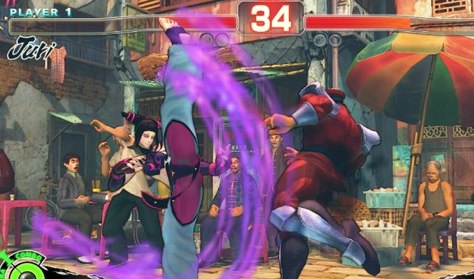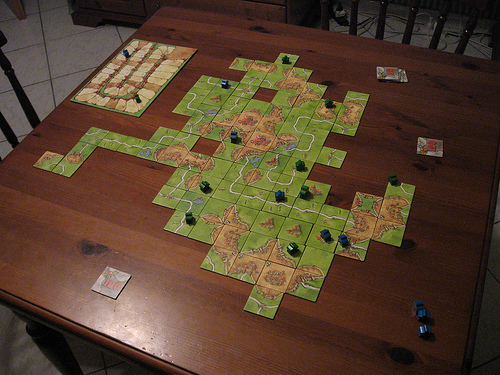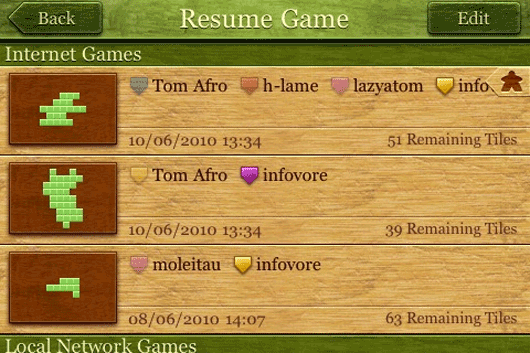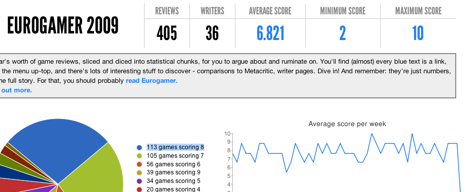
I’m as much an apologist for fighting games as I am a fan of them, and so when I saw Quintin “Quinns” Smith’s latest post for Rock, Paper, Shotgun pop up in my feedreader, I got ready to suck my teeth. A cursory skim hinted at the content: Starcraft II as a better “e-sport” than (Super) Street Fighter 4.
By the time I’d finished reading the article, I ended up agreeing with Smith a great deal. I’m still a fighting game apologist, and you can pry my arcade stick from my cold, RSI-crippled hands, but when it comes to e-sports, I’ll agree that fighters aren’t your best bet.
The most obvious reason why is Smith’s strongest point: sports of any stripe are about more than the ninety minutes on the pitch.
The formats that have evolved for competitions don’t help. Starcraft has evolved into a game of ladders and ongoing series; SF4, and other fighters, focus on tournaments: events covering a single day, usually with a form of knock-out structure (but with added complications to keep people playing). And an SF4 bout is short: 90 seconds per round, five rounds per match as a maximum. And between tournaments? Contestants return to their home arcades, to online services, to the Shoryuken forums and Youtube, trading combos and demonstrations, building reputation until the next official event. From this description alone, you can already see why RTS games – and Starcraft in particular – make better “e-sports”.
The longer format of the individual games have also helped Starcraft commentary become genuinely useful, and to augment what’s going on. There’s time to get some words in, for starters; not just colour, but also analysis. Smith’s complaint about SF4 commentary –
If you listen to commentaries of SFIV tournament matches, despite the fact that each match plays out much more quicklyyou still hear the commentators filling seconds by talking about what the players might be aiming for, or what their chosen characters are good at, or simply calling out special moves as they happen. “Oh! Sonic boom! Oh, EX-flash kick! Yeah, Guile’s a very defensive character, he wants to keep Balrog way out of range.”
is a fair one, but I think he’s wrong on one point: there’s not really time to do analysis right; if you actually bothered to explain and what’s happening (“oh, and Hart goes for a super jump cancel rather than a focus dash cancel“) you run the risk of running out of time. And: it’s not a game you can analyse in real-time very easily; it takes a few seconds of reactive analysis, thinking about what you saw, to actually say something meaningful. I’m not going to defend SF4 commentary too much: I do wish there’d be a bit less “colour” and more analysis, but it doesn’t lend itself to real-time analysis. The best thing you can do is just re-watch the match a few times, and work out why he went for that super jump cancel on your own.
It may be a rapid game, but that doesn’t mean the whole thing comes down to reflexes.
For all the talk of high level SFIV play being like a chess match and any obvious parallels with, say, boxing, there’s no escaping that the game is primarily down to honed reflexes.
I definitely disagree with that. It’s a lot faster than chess, I’ll give Smith that: it is lightning-quick and demands honed reflexes in execution. (Much, in fact, like Starcraft – you should see the speed professionals can micromanage and click around that UI; their speed with a mouse terrifies me). But when you get over that speed-of-execution, there are a great many similarities to chess that both explain the appeal of such games, and why they’re such terrible spectator sports.
Chess and SF4 are about having innate knowledge of a game’s mechanics. System knowledge – basic rules, more complex rules, exceptions, building combos out of these, testing knowledge. The system becomes so big you can’t calculate it all – instead, you combine a great deal of factual recall – simply learning combos/openings, mix-ups/mid-games, FADC/end-games, rather than working them out – with a bit of human intuition (which chess computers lack). The skill in SF4 then becomes about taking that knowledge – factual recall, knowledge of the system, a bit of intuition – and speeding it up. There are fewer possibilities to take in than chess – at any one time, you’re looking at low/mid/high/throw/counter/focus attack (and chains thence), and realistically, not even that many – but the speed makes it hard enough.
That sounds like a great game, but a lousy spectator sport. Chess and SF4 are both good analytical sports.
How many column inches are devoted to analysis of chess games? Not commentary, not colour pieces; just move-analysis. There’s one every day in most broadsheets. How many books are there on openings, mid-games, endings? How many Youtube videos providing tutorials for characters, or even individual techniques such as kara throwing?
There are many, because these games – games that reward and require analysis – become more enjoyable to watch the better you know the system. Chess columns are for fans, not novices; the SF4 videos are for enthusiasts. They expand on what happens on the screen, not merely reporting it. And you can understand the analysis to a level higher than you can play it: I can explain the Focus Attack Dash Cancel, for instance, but I sure have difficulty pulling one off.
Games like these that afford – and demand – analysis don’t really support the ebb and flow of seasonal league. It’s not about the victories and losses, supporting a team, as much as it is about seeing players trying new things, pushing the enevlopes with new combos (or strategies), pushing a character beyond the limits of their tier (or seeing if opening x really is viable against opening y). The long goal of playing the game is making everybody better at the game; making the game better.
Street Fighter’s great red herring – which, indeed, it shares with all fighting games – is that it shows two human beings in mortal combat. But really, they’re not people at all; they’re rulesets, two giant boxes of cogs and clockwork being manipulated to produce a higher number in a shorter time. Strip away the aesthetics, get down to the mechanics, and that’s what there is. You might call that soulless, and I would forgive you for that even if I don’t agree: the real magic of fighting games is watching a player wrestle with their own box of cogs and defeat their opponent with it; watching mastery of the system.
That’s not a kind of game that everybody gets; analytical, systems-oriented, analytically studied, and mechanically driven. And all those adjectives make for a terrible sport, e- or otherwise. A far more understandable game would have longer dynamics, beyond matches and across tournaments; be complex enough to demand analysis, but that analysis would be understandable enough in real time. And the game played at its highest level ought to resemble the game you play with your friends and pick-up partners. Football in the park is identifiably the same as football at Wembley, even if the skill levels on display are wildly different.
And so, given all that, it’s only fair to agree that Starcraft is the better sport – by a long way. That’s my analytical brain speaking. But Street Fighter 4 is the better game, and the one that has my heart, rulesets, clockwork, cogs and all.




